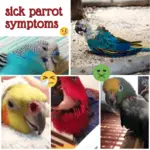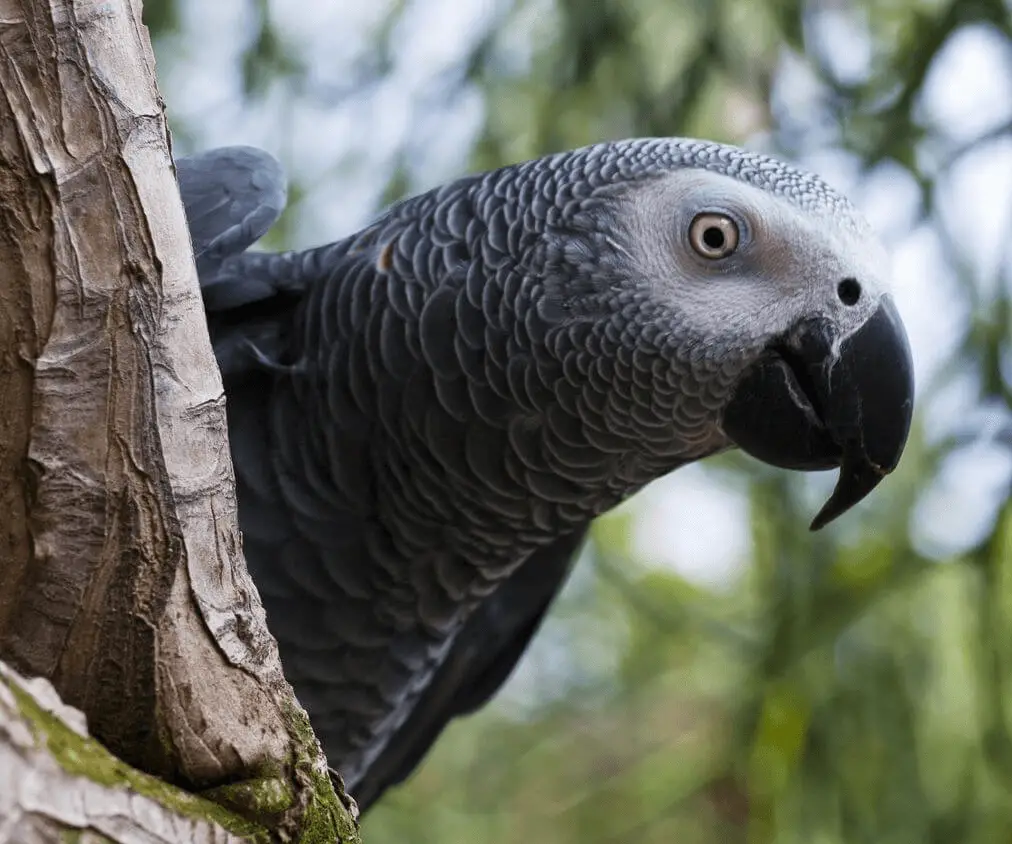PARROT Euthanasia demystified A client once mentioned to me during a consultation: “As my bird has an incurable disease and nothing can be done for it, I will take it home and kill it myself. don’t want to pay for euthanasia. ” It is very unfortunate that even today, animals are regarded by some people as mere consumer goods. Respect for life does not seem to exist for some. Of course, I’ve heard all the stories: from drowning to car exhaust. A pharmacist has even contacted me to ask me if the parrot euthanasia of a bird could be done by injecting it with intravenous rubbing alcohol …
In veterinary medicine, we have a precious privilege which is to be able to end the suffering of an animal respectfully and without pain. When parrot Euthanasia is performed for the right reasons, it is the best proof of love and respect that an owner can have for his animal.
By adopting a parrot, unconsciously, we predict that it would be normal for it to survive us. But sometimes fate decides otherwise. Incurable diseases and cancers exist in birds. That’s why sometimes you have to know how to say goodbye to your feathered companion more quickly than you would have hoped. At this moment, the veterinarian becomes the key person in your approach and he tries to make this difficult moment as easy as possible.
The parrot Euthanasia technique used by veterinarians is that involving the injection of barbiturate ( sodium pentobarbital ). This strictly controlled substance was formerly used as a sedative anesthetic or as a treatment for certain types of seizures ( eg seizures secondary to strychnine or tetanus toxin poisoning ). However, with the arrival of anesthetic gases ( example: Halotane and Isoflurane) and much safer anticonvulsant drugs, barbiturates have been almost completely abandoned for these uses. Now barbiturates are mainly used to perform humane euthanasia of animals not intended for food.
Pentobarbital sodium ( Euthanyl ) is a colorless, odorless, bitter-tasting solution. It can be stored away from light and at room temperature. Many vets add dye to their bottle of euthanizing agent to avoid possible confusion when the drug ends up in a syringe.
Although no healthcare professional injects anything into an animal without being absolutely 100% certain of the contents of the syringe, staining the euthanyl decreases the already almost zero risk that the euthanizing solution will be. injected by mistake. When you see a syringe with neon pink or forest green content, anyone will quickly realize that it does not contain a regular substance.
How do barbiturates work?
Barbiturates are central nervous system depressants. They can cause different levels of deterioration in the animal’s condition, including dizziness, sleep, deep coma, and death. The effect of the drug may vary depending on the species, age, general condition, and concomitant use of other drugs. Simply put, just one at the same dose can cause different effects in different animals and I have often noticed that some animals need a larger volume of barbiturate to euthanize them than others. Once injected, euthanyl begins by putting the animal to sleep and all the muscles relax. Because the euthanasia technique requires a larger dose than the anesthetic dose, once injected, this medicine quickly concentrates in the brain and liver ). The respiratory movements gradually decrease in frequency and depth until the respiratory volume is zero. Once breathing stops, the heart then feels the effect of the injection. It takes about four times as many drugs to cause cardiac arrest compared to respiratory arrest. This is why, as the bird’s system absorbs the drug, the sequence of events will always be the same: sleep, respiratory arrest, then cardiac arrest.
In birds, euthanyl can be injected intraperitoneally ( into the abdomen ) or intravenously. The intravenous injection is ideally done in the bird previously anesthetized because it is necessary to avoid at all costs that the drug spreads around the vein. This situation is very painful for the bird. The injection in the abdomen is not stressful for the bird and allows the owner to hold his animal so that it gently falls asleep on it. As the substance is absorbed slowly when deposited in the abdomen, it will take a few seconds for the bird to die. On the other hand, death occurs instantly when the injection is made directly into the vein.
The euthanasia scenario is yours!
Euthanasia can be done in a veterinary clinic or at home, some veterinarians agree to travel to avoid unnecessary stress on the bird. Whether you wish to hold your bird after its injection has been given or if you prefer to see it only after it has passed away, that is also your choice and should be respected. Some people prefer not to see their deceased animal, preferring to keep the image of their living bird as their last memory. All the ways of doing things are correct.
The death of the bird is noted by the veterinarian by checking these points:
- Breathing is stopped
- Auscultation (the heart has indeed stopped beating)
- Observation of the mucous membranes ( they are blue )
Some animals have muscle tremors within minutes of death. This phenomenon is natural and normal and does not at any time mean that your bird is not dead. A period of stiffness ( rigor mortis ) always follows death and lasts a few hours. Subsequently, the animal becomes flexible again.
It is imperative that you dispose of your pet’s body in a very safe manner. The number of barbiturates used to euthanize your bird could kill an animal if it were found and ate it. A dose of two to three milliliters injected into a parrot is sufficient to kill a small dog or cat. You can therefore have your bird cremated or buried in a safe manner. Never put a euthanized animal in the garbage. Instead, leave it to your vet who will see to it being cremated.
Although no one likes to envision the worst with their animals, it is still wise to take a few minutes to reflect on the issue of euthanasia. If you were to ever experience it with your parrot, how would you like it to happen? If you think about it before you get overwhelmed by pain, you will avoid making decisions too quickly under the influence of emotion. The mourning that follows will certainly be a little easier.
People Want Me to Euthanize My Rescued Cockatoo
SOURCE:Parrot Playhouse





















